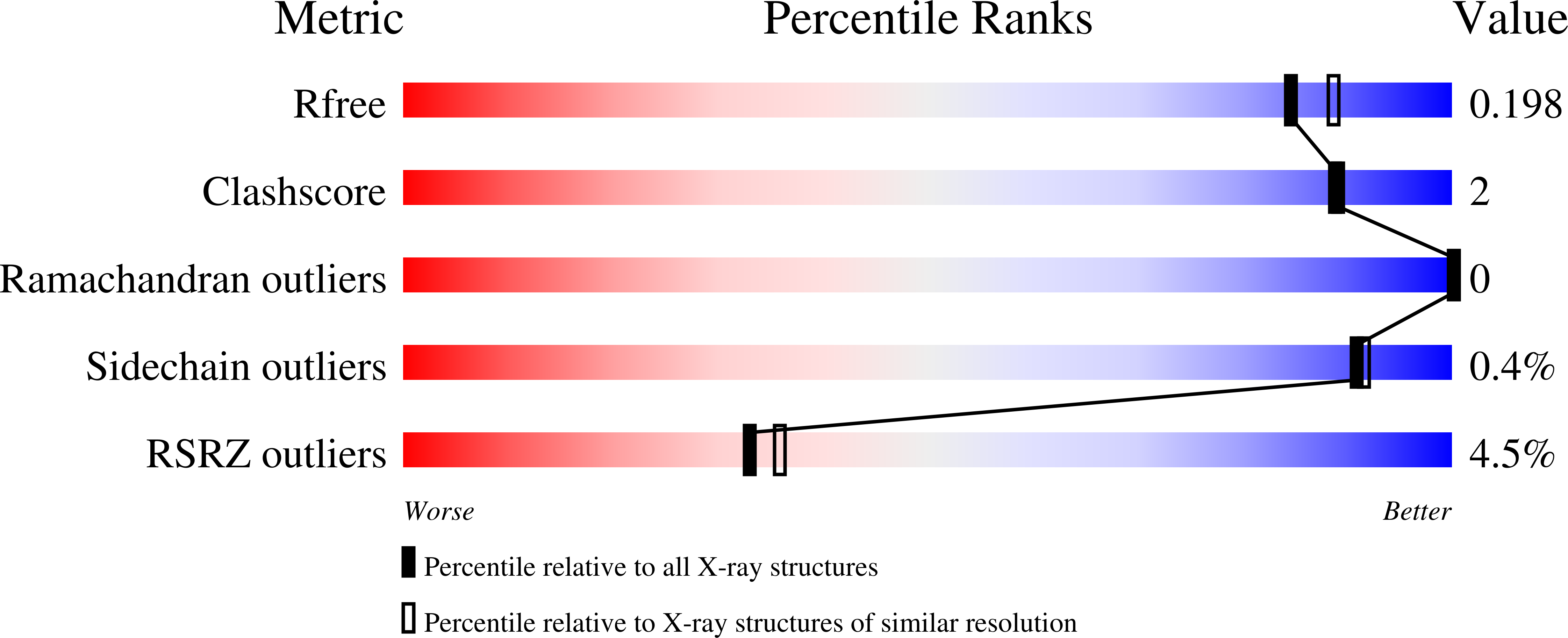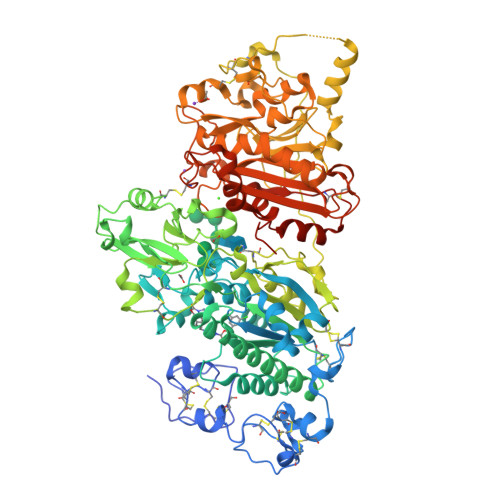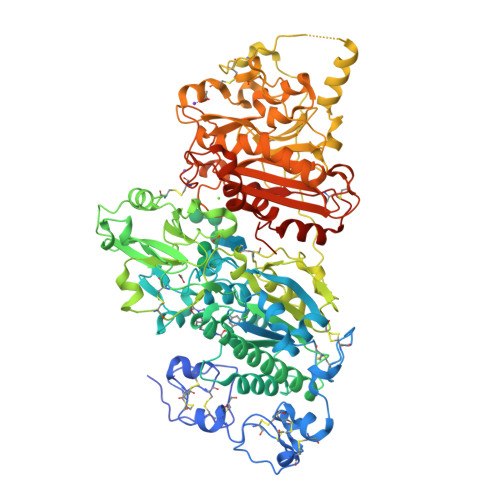Synthesis, Characterization, and in vivo Evaluation of a Novel Potent Autotaxin-Inhibitor.
Hunziker, D., Reinehr, S., Palmhof, M., Wagner, N., Biniasch, T., Stute, G., Mattei, P., Schmitz, P., DiGiorgio, P., Hert, J., Rudolph, M.G., Benz, J., Stihle, M., Gsell, B., Muller, S., Gasser, R., Schonhoven, N., Ullmer, C., Joachim, S.C.(2021) Front Pharmacol 12: 699535-699535
- PubMed: 35126098
- DOI: https://doi.org/10.3389/fphar.2021.699535
- Primary Citation of Related Structures:
5S9L, 5S9M, 5S9N - PubMed Abstract:
The autotaxin-lysophosphatidic acid (ATX-LPA) signaling pathway plays a role in a variety of autoimmune diseases, such as rheumatoid arthritis or neurodegeneration. A link to the pathogenesis of glaucoma is suggested by an overactive ATX-LPA axis in aqueous humor samples of glaucoma patients. Analysis of such samples suggests that the ATX-LPA axis contributes to the fibrogenic activity and resistance to aqueous humor outflow through the trabecular meshwork. In order to inhibit or modulate this pathway, we developed a new series of ATX-inhibitors containing novel bicyclic and spirocyclic structural motifs. A potent lead compound (IC 50 against ATX: 6 nM) with good in vivo PK, favorable in vitro property, and safety profile was generated. This compound leads to lowered LPA levels in vivo after oral administration. Hence, it was suitable for chronic oral treatment in two rodent models of glaucoma, the experimental autoimmune glaucoma (EAG) and the ischemia/reperfusion models. In the EAG model, rats were immunized with an optic nerve antigen homogenate, while controls received sodium chloride. Retinal ischemia/reperfusion (I/R) was induced by elevating the intraocular pressure (IOP) in one eye to 140 mmHg for 60 min, followed by reperfusion, while the other untreated eye served as control. Retinae and optic nerves were evaluated 28 days after EAG or 7 and 14 days after I/R induction. Oral treatment with the optimized ATX-inhibitor lead to reduced retinal ganglion cell (RGC) loss in both glaucoma models. In the optic nerve, the protective effect of ATX inhibition was less effective compared to the retina and only a trend to a weakened neurofilament distortion was detectable. Taken together, these results provide evidence that the dysregulation of the ATX-LPA axis in the aqueous humor of glaucoma patients, in addition to the postulated outflow impairment, might also contribute to RGC loss. The observation that ATX-inhibitor treatment in both glaucoma models did not result in significant IOP increases or decreases after oral treatment indicates that protection from RGC loss due to inhibition of the ATX-LPA axis is independent of an IOP lowering effect.
Organizational Affiliation:
F. Hoffmann-La Roche Ltd., Pharma Research and Early Development, Therapeutic Modalities, Small Molecule Research, Roche Innovation Center Basel, Basel, Switzerland.






















